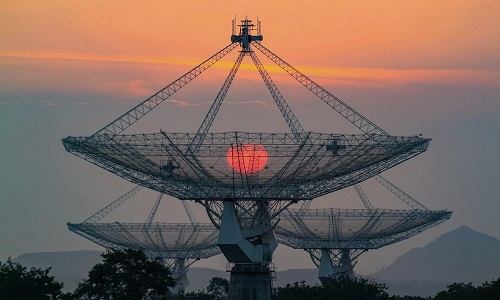India’s largest radio telescope key to detecting universe’s vibrations
| Date :30-Jun-2023 |

NEW DELHI,
INDIA’S Giant Metrewave Radio Telescope (GMRT) was one of the world’s six large telescopes that played a key role in finding the first direct evidence for the relentless vibrations of the fabric of the universe, caused by ultra-low frequency gravitational waves. The findings were published on Thursday by a team of global scientists, including from Indian Pulsar Timing Array (InPTA) which used the Pune-based GMRT telescope.
“We are within a whisker of achieving such a dynamic range where one can finally listen to the bass sections in this cosmic gravitational-wave-symphony,” said Pratik Tarafdar of The Institute of Mathematical Sciences, Chennai. Such waves are expected to originate from a large number of dancing monster black hole pairs, several million times heavier than the Sun, the scientists said. “It is fantastic to see our unique GMRT data being used for the ongoing international efforts on gravitational wave astronomy,” said Yashwant Gupta, Centre Director at National Centre for Radio Astrophysics (NCRA), Pune, which operates the GMRT. The team’s results are considered as a crucial milestone in opening a new window in the gravitational wave spectrum. Scientists of the European Pulsar Timing Array in collaboration with the Indo-Japanese colleagues of the InPTA arrived at the findings after analysing pulsar data collected over 25 years with six of the world’s largest radio telescopes.
